
UPDATE 6:56pm PT: Judge Denies Injunction! Suit Dismissed! Details follow in an update following our original coverage...
A last-minute Election Eve compaint has been filed in a Los Angeles courtroom within the hour calling on LA County's registrar of voters, Conny B. McCormack to immediately remove Diebold elecronic voting machine tabulators, said to have illegal access to the Internet as well as uncertified tabulation software, from counting rooms at the county's main facility in Norwalk, The BRAD BLOG has learned.
The plaintiffs in the case are Cindy Asner and Cynthia Henderson, LA County Chair of the Peace and Freedom Party.
The emergency filing, being heard at this hour, is based on an affidavit filed today by Green Party election system inspector, John Wenger, a PhD and retired software engineer from Northrup Grumman who has been tracking LA County's use of electronic voting machines over the past month along with several other inspectors from both the Green and Democratic parties. The BRAD BLOG spoken at length with Wenger over the weekend, and has reviewed a draft version of his declaration being filed with the suit. (The final version of Wenger's declaration is now posted at the end of this article.)
Los Angeles county is the largest voting area in California. The state is holding its Primary Election tomorrow. Touch-screen Diebold voting machines --- now shown to be hackable and highly vulnerable to malicious tampering at both the point of the voting machine itself and its central tabulator software --- are used for early voting only in LA County. Though early voting in LA began several weeks ago and ended last Friday, tabulation of votes cast during that period will not begin until the polls close on Tuesday evening at 8pm PT.
The race is an important one to Election Integrity advocates since state senator Debra Bowen is running in a primary race in hopes of winning the Democratic nomination to take on Republican CA Sec. of State Bruce McPherson who has been a supporter of vulnerable electronic voting machines, including Diebold's, in the state. As well, the LA County Registrar of voters, Conny B. McCormack has been a long-time supporter of Diebold and their election equipment and has even been featured, via photograph and endorsement, on promotional brochures distributed by the controversial Ohio company. (See graphic below.)

This year's primary is also being closely watched due to a Democratic primary challenge by anti-war candidate Marcy Winograd against powerful pro-war Democratic U.S. House Representative Jane Harman in the state's 36th U.S. Congressional district.
Further, another troubling detail about Diebold's touch-screen systems in the county was revealed on Friday of last week when The BRAD BLOG received an email indicating that one voter at least --- Michael Shure, a political commentator on Sirius Sattelite's The Young Turks radio program --- who voted on the Diebold touch-screen machines was given the incorrect ballot.
Shure, who lives in CA's 36th congressional district noted that his touch-screen ballot gave him the option to vote for Rep. Henry Waxman, who is running unopposed in his U.S. Congressional primary, instead of the Winograd/Harman race which should have been on his ballot.
"Unbelievable," Shure wrote in his email. "Had I not known, as I am sure many voters don't, who my Rep. was, and what district I live in, I would have been voting for someone else."
Indeed, Shure's experience underscores further dangers of combined precincts using elecronic touch-screen voting machines as Los Angeles offers during the early voting period when voters may go to any early voting location and cast their ballot on machines which --- supposedly --- offer them the appropriate ballot for their particular district.
The experience has left the Winograd campaign wondering how many other voters may have missed out on the opportunity to vote in that contentious race and whether or not they may need to file a challenge to the election in order to find out.
UPDATE 6:56pm PT: Judge Denies Injunction! Suit Dismissed! Details follow below...
We've just received word that in an emergency hearing, Judge David Yaffee has dismissed the plaintiff's suit citing "lack of evidence," according to a witness in the courtroom and another one who corroborated the general report.
Actress, Election Reform activist and Progressive Democrats of America (PDA) advisory board chairperson, Mimi Kennedy, was present as the case was filed, and then heard, and has contacted The BRAD BLOG with updated details.
According to both Kennedy and plaintiff Asner, the suit was filed after several rounds of wrangling with the LA County Board of Supervisors who refused to make changes to the counting room configuration. Green Party inspector Wenger has described a series of problems and concerns discovered in the election counting rooms which he recount in his formal declaration (now posted in full below). He describes a litany of concerns about what he witnessed in the rooms and described them as "not free from potential fraud or manipulation."
The LA County Supervisors reportedly stood by Registrar McCormick's administration of the election during the early morning wrangling today, and thereby forced the plaintiffs to file their emergency injunction according to Kennedy.
She told us the conditions of the rooms and the lack of confidence offered by McCormack's secretive and questionable administration of them is of enormous concern.
"Conny's tally room is to elections what the putative state was of the crime labs during the O.J. case," Kennedy said. "[The registrars] keep saying that 'everything's fine'. But the truth is that we can't know for sure whether justice is served or denied. The tragedy is our public business is being conducted in a way that nobody can tell for sure."
Nonetheless, Judge Yaffe dismissed the complaint "on its merits due to complete lack of evidence," as Kennedy described the proceedings.
She reports that the Judge was unmoved by the plaintiff's concerns and the argument of the attorney, Stephanie Nordlinger, who was also one of the inspectors representing the Democratic party. He expressed that the claims were only of a concern if it could be proven to him that "there are crooked people who have access to that room."
For the defendant's part, the Registrar's office claimed that there was no time to make the changes requested by the suit which demanded that the tabulation machines be removed from the rooms which contained Internet access and copies of "GEMS2" --- said to be an uncertified update to Diebold's central tabulator software known as GEMS --- on several computers.
GEMS itself has been shown to be hackable and was the focus of a Dept. of Homeland Security "Cyber Security Alert," issued prior to the 2004 Election due to an undocumented backdoor said to allow a single malicious user to alter the results of elections run on that software. That alert went unreported by the media for more than a year until it was revealed by The BRAD BLOG in September of 2005.
Says Wenger in his affidavit after describing conditions in the counting rooms:
Kennedy describes the defendants' attorneys as claiming there was nothing to worry about. "'They're claiming 'there's paper ballots, they can have a recount, there's paper ballots. What's the problem?'"
When the concerns about the uncertified software present in the tabulation room were expressed, and defendants answered by claiming they are just testing the software, the Judge seemed to be less-than-concerned about the ramifications. "If there was something being tested for elections, don't you have to test it?," he reportedly asked.
See Wenger's full declaration below, with many specific details about what he and the other inspectors saw which triggered the lawsuit this afternoon....
I, JOHN WENGER, say:
I know the following facts of my own personal knowledge unless it is stated upon my information and belief, in which case I believe it to be true.
1. I am one of the designated Green Party observers of the election voting and tabulations equipment for the June 6, 2006 primary in Los Angeles County. We were appointed under the authority of Elections Code section 15004, which reads:
The county central committee of each qualified political party may employ, and may have present at the central counting place or places, not more than two qualified data processing specialists or engineers to check and review the preparation and operation of the tabulating devices, their programming and testing, and have the specialists or engineers in attendance at any or all phases of the election.
2. I am qualified to be a Green Party technical representative because I earned my Ph.D. in Physiological Psychology from the University of Washington in 1980. I did post-doctoral work in Peptide Neurobiology at The Salk Institute for Biological Studies in La Jolla, California 1980-1982. I have used computers for more than forty years, learning to program in the IBM Macro Assembly language in 1962. I also used computers throughout my education culminating in my Ph.D. in 1980, and continuing on through my postgraduate work at the Salk Institute, and at the U.S.C. Dept of Pharmacy at the U.S.C. Medical Center. Professionally, I worked in the defense industry for more than thirteen years working in Artificial Intelligence, Systems Engineering, and Information Technology evaluations for Northrop Grumman Corporation. I retired from Northrop Grumman Corporations as Senior Software Engineer in 1997.
3. I am a registered voter, a member of the Green Party, and will become a member of the L.A. County Council of the Green Party after the June 6 election.
4. On May 10, 2006, and again on May 23, 2006. I accompanied Sasha Karlik of the Green Party. and Stephanie Nordlinger and Kelley Willis (May 10 only), who represented the Democratic Party, on a tour of the Registrar of Voters facility in Norwalk. We asked many questions about how the ROV intended to process the three types of ballots - those from Early Voting (Diebold touchscreen computers, Model TSX), Absentee Voting, and Election Day (both Inka-Vote systems).
5. Kenneth Bennett, Manager of the Elections Department, and his lead elections tester, Brian Ikenaga, showed us around and answered our questions on May 10 and on May 23. The Elections Department vote tabulation area has three rooms, on the South side of a hallway running East-West on the third floor of the ROV's offices in Norwalk. There is a large main room, with three private offices on the East end of the main room. Of these three offices, only the North one, and the center one, are used for vote tabulation. The North office contains the tabulator for the paper InkaVote ballots. The center office contains the tabulator for the early voting which is conducted on the Diebold Touchscreen machines (TSX).
6. On May 23, and again on June 2, we toured the main elections department room, often called the MTS (Micro Tally System) room, a large room on the third floor of the ROV. Here we saw 18 paper-ballot scanning stations, each comprised of one PC, with a beige-colored case, equipped with two card readers (InkaVote ballot optical scanners). The computer programming of this system was developed by L.A. County personnel some years ago. It runs DOS (Disk Operating System), and thus is quite old and very well tested. The PC chassis of each scanning station is housed in a cabinet such as is often used for stereo gear in the home. This is the paper ballot scanning part of the MTS system that the Secretary of State has certified for production use in elections.
7. Eighteen Dell Computers: On May 23, we were surprised to see another PC, a newer Dell PC, which we were told was running Windows 2000 in the same cabinet. This Dell PC was black and sitting on the shelf below the state-certified MTS scanning-station computer. We were told that this computer is for the next generation system called GEMS2 from the Diebold Corporation.
8. Each scanning station computer takes election data from two card readers and sends it via a token-ring (closed) network to the North office, the main tabulator room, which contains a computer that sorts the electronic images of the ballots and counts the votes. This computer outputs the vote counts via a serial cable to a second computer in the same room that computes various reports for sending to the office of the Secretary of State. Also in this room is a third computer, attached to the Internet via a 28K telephone modem, that is used for looking at the website of the Secretary of State during the vote-counting process.
9. On May 23, Brian Ikenaga of the Elections Department staff told us that the black Dell computers had been put in each of the 18 system stations to test GEMS 2, which is tabulating software from the Diebold Corporation that the Secretary of State has not certified it as safe for use in official elections. Brian said that they had been testing the GEMS2 software for four to five months, with the assistance of technicians from the Diebold Corporation.
10. On June 2, we were told (and surprised) by Michael Petrucello, Assistant ROV, Chief of Information Technology for the L.A. County ROV, that these Dell computers did not contain (and never did contain) any software other than their operating system, and were not connected to the network used for vote tabulation (the token ring network). We opened one scanning station cabinet and found the Dell computer on the next shelf below the old PC computer (which runs under DOS 6 - we were told). While no communication cables were attached to the back of the Dell computer, a power cord was attached and could have been plugged into the adjacent power strip in seconds. Communication cables now attached to the old PC computer could be quickly moved to the Dell. These changes would not be visible unless the cabinet were opened and the shelf pulled out. The contents of these cabinets cannot be viewed from the hallway observation station provided for citizens to view the election tabulating process.
11. When we visited the North office to inspect the vote-counting computer, we found a Zoom 28K modem attached to third computer, and we opined that remote connectivity via the Internet in a vote-tabulating room was a potential security risk.
12. I am informed and believe that at least some of the ROV staff has been trained on the GEMS 2 software, and the junior staff might not realize that this software was not certified and legal for use in official elections.
13. The GEMS2 Tabulating Computer: On June 2, I and various representatives of the Green and Democratic parties and representatives from two county Supervisors offices and ROV staff visited the center office (which has a black sign above the door saying "MTS Office." It contains a large Compaq computer (about the six feet tall, and roughly two to three feet square) that we were told is part of the GEMS2 hardware configuration. We were informed that it was always kept running, which seemed strange given that Assistant ROV Michael Petrucello had stated that they had not even received the GEMS2 software yet, and when we asked why they ran it all the time with no software on it we were told that "We just do."
14. The Administrative Computer: We were also told on June 2 that the center office had a computer with Internet connections that it planned to use for administrative purposes, including tracking the arrival of shipments of ballots from the precincts. We stated that this Internet connectivity was unnecessary in this room, was a potential security risk, and that connections to the Internet, while valuable for many purposes, should not be allowed in the rooms where the county counts the votes.
15. Request for Correction to ROV: I suggested that the existence of the server and the 18 Dell computers in such close proximity to the computers being used to tabulate results was a security risk, and at least one Democratic party representative (Nordlinger) agreed. Not only could these computers be used to attack the software on the officially certified computers, but the Dell GEMS2 computers could be substituted for the certified computers to scan and count the votes and possibly to alter the election results. Since this software has not been certified by the State, there is no way to know what this software does at this time. For this reason, we asked that this equipment be removed from the three tabulating rooms (and preferably the entire floor) during the tabulation period, and not returned until the election results are officially certified.
16. Refusal of Request for Correction: The county Registrar of Voters Conny B. McCormack (and/or one of her deputies in her presence) refused. I am informed and believe that the ROV' position is that this is unnecessary and that the office has taken adequate steps to ensure an accurate count of the votes.
17. Cost - Benefit Analysis: The cost of moving 18 CPUs (maybe 10 pounds each) and one large server (the size of a medium refrigerator) to another floor is nominal, especially in comparison with the cost of recounting even one race. Several races appear to be close, and there are lots of reported undecided voters. Some these races may be decided by a few hundred or a few thousand votes out of the more than two million expected to be cast.
18. Exhaustion of Administrative Remedies: On Monday, June 5, I and others representing the Green and Democratic parties sought to obtain an informal Board of Supervisors' order to the Registrar of Voters to remove this unnecessary computer equipment from this floor of the ROV's offices. If this case and this Declaration are filed, it will mean that these efforts have been unsuccessful and that court intervention is needed.
19. The purpose of installing the voter machine certification system is to make the system safe from fraud or manipulation. (See Elections Code ?19205 subd. (c).) In my opinion, in its present state, the Los Angeles County system is not free from potential fraud or manipulation. The unnecessary GEMS 2 tabulator and the 18 Dell computers MUST be removed from the vote-counting rooms as soon as possible and before 8 p.m. on June 6. The Internet-connected computers to be used for administrative functions and for viewing election results on the Secretary of State's website should be moved to another location.
20. Inspection of Vote-Tabulating Facilities: I am informed and believe that Elections Code ?15004 has not been interpreted by any court. The right granted there for the political parties to have designated technical representatives "present at the central counting place or places . . . to check and review the preparation and operation of the tabulating devices, their programming and testing, and have the specialists or engineers in attendance at any or all phases of the election" means that the parties' designated representatives should be permitted to enter the main vote counting room (with an escort if the ROV desires) before 8 p.m. on June 6 to verify that the extra computer equipment has been removed and at random intervals during the vote count (the next 28 days) to ensure that it remains removed.
21. The computing equipment should remain removed from these areas until the vote canvass is completed, approximately 28 days after June 6. Since a TRO would expire by that time, a temporary injunction will be needed.
22. Plaintiffs have no other plain, speedy and adequate remedy at law.
I declare under penalty of perjury under the laws of the State of California that the foregoing is true and correct. Executed at Los Angeles CA on June 5, 2006.
__________________________
John Wenger, Ph.D.
Green Party Technical Observer


 Sunday 'Now Hoarding' Toons
Sunday 'Now Hoarding' Toons Mad World:
Mad World: 'Green News Report' 5/15/25
'Green News Report' 5/15/25
 Plane Corruption and the Future of the DOJ: 'BradCast' 5/14/25
Plane Corruption and the Future of the DOJ: 'BradCast' 5/14/25 'Deeply Evil': GOP Proposes Largest Medicaid Cuts in History: 'BradCast' 5/13/25
'Deeply Evil': GOP Proposes Largest Medicaid Cuts in History: 'BradCast' 5/13/25 'Green News Report' 5/13/25
'Green News Report' 5/13/25 And Then They Came for the Mayors...: 'BradCast' 5/12/25
And Then They Came for the Mayors...: 'BradCast' 5/12/25 Sunday 'New Guy, Old Guy' Toons
Sunday 'New Guy, Old Guy' Toons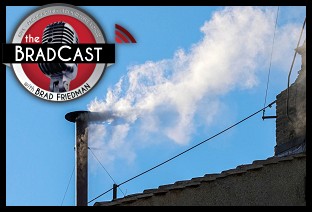 Blowing Smoke. At the Vatican and White House: 'BradCast' 5/8/25
Blowing Smoke. At the Vatican and White House: 'BradCast' 5/8/25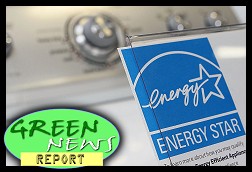 'Green News Report' 5/8/25
'Green News Report' 5/8/25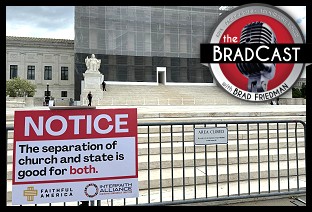 SCOTUS Weighs Public Funding of Religious Schools: 'BradCast' 5/7/25
SCOTUS Weighs Public Funding of Religious Schools: 'BradCast' 5/7/25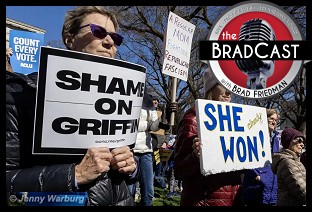 Trump Judge Blocks NC GOP Theft of 2024 Supreme Court Seat: 'BradCast' 5/6/25
Trump Judge Blocks NC GOP Theft of 2024 Supreme Court Seat: 'BradCast' 5/6/25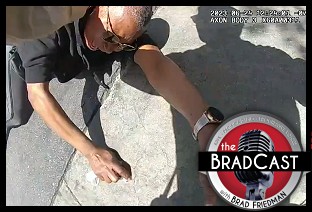 Prosecutors Quit After U.S Attny Strikes Deal With Felon Cop: 'BradCast' 5/5/25
Prosecutors Quit After U.S Attny Strikes Deal With Felon Cop: 'BradCast' 5/5/25 Trump Losing Streak Continues into SECOND Hundred Days: 'BradCast' 5/1/25
Trump Losing Streak Continues into SECOND Hundred Days: 'BradCast' 5/1/25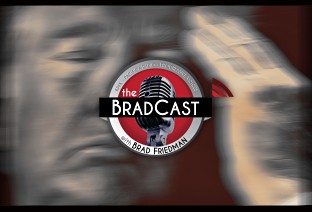 100 Daze (w/ Digby and Driftglass): 'BradCast' 4/30/25
100 Daze (w/ Digby and Driftglass): 'BradCast' 4/30/25 Campaign to 'Impeach Trump Again' Gains Fresh Momentum: 'BradCast' 4/29/25
Campaign to 'Impeach Trump Again' Gains Fresh Momentum: 'BradCast' 4/29/25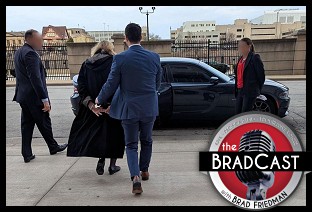 And Then They Came for the Judges...: 'BradCast' 4/28/25
And Then They Came for the Judges...: 'BradCast' 4/28/25 Trump EPA Guts Enviro Justice Office: 'BradCast' 4/24/25
Trump EPA Guts Enviro Justice Office: 'BradCast' 4/24/25
 VA GOP VOTER REG FRAUDSTER OFF HOOK
VA GOP VOTER REG FRAUDSTER OFF HOOK Criminal GOP Voter Registration Fraud Probe Expanding in VA
Criminal GOP Voter Registration Fraud Probe Expanding in VA DOJ PROBE SOUGHT AFTER VA ARREST
DOJ PROBE SOUGHT AFTER VA ARREST Arrest in VA: GOP Voter Reg Scandal Widens
Arrest in VA: GOP Voter Reg Scandal Widens ALL TOGETHER: ROVE, SPROUL, KOCHS, RNC
ALL TOGETHER: ROVE, SPROUL, KOCHS, RNC LATimes: RNC's 'Fired' Sproul Working for Repubs in 'as Many as 30 States'
LATimes: RNC's 'Fired' Sproul Working for Repubs in 'as Many as 30 States' 'Fired' Sproul Group 'Cloned', Still Working for Republicans in At Least 10 States
'Fired' Sproul Group 'Cloned', Still Working for Republicans in At Least 10 States FINALLY: FOX ON GOP REG FRAUD SCANDAL
FINALLY: FOX ON GOP REG FRAUD SCANDAL COLORADO FOLLOWS FLORIDA WITH GOP CRIMINAL INVESTIGATION
COLORADO FOLLOWS FLORIDA WITH GOP CRIMINAL INVESTIGATION CRIMINAL PROBE LAUNCHED INTO GOP VOTER REGISTRATION FRAUD SCANDAL IN FL
CRIMINAL PROBE LAUNCHED INTO GOP VOTER REGISTRATION FRAUD SCANDAL IN FL Brad Breaks PA Photo ID & GOP Registration Fraud Scandal News on Hartmann TV
Brad Breaks PA Photo ID & GOP Registration Fraud Scandal News on Hartmann TV  CAUGHT ON TAPE: COORDINATED NATIONWIDE GOP VOTER REG SCAM
CAUGHT ON TAPE: COORDINATED NATIONWIDE GOP VOTER REG SCAM CRIMINAL ELECTION FRAUD COMPLAINT FILED AGAINST GOP 'FRAUD' FIRM
CRIMINAL ELECTION FRAUD COMPLAINT FILED AGAINST GOP 'FRAUD' FIRM RICK SCOTT GETS ROLLED IN GOP REGISTRATION FRAUD SCANDAL
RICK SCOTT GETS ROLLED IN GOP REGISTRATION FRAUD SCANDAL VIDEO: Brad Breaks GOP Reg Fraud Scandal on Hartmann TV
VIDEO: Brad Breaks GOP Reg Fraud Scandal on Hartmann TV RNC FIRES NATIONAL VOTER REGISTRATION FIRM FOR FRAUD
RNC FIRES NATIONAL VOTER REGISTRATION FIRM FOR FRAUD EXCLUSIVE: Intvw w/ FL Official Who First Discovered GOP Reg Fraud
EXCLUSIVE: Intvw w/ FL Official Who First Discovered GOP Reg Fraud GOP REGISTRATION FRAUD FOUND IN FL
GOP REGISTRATION FRAUD FOUND IN FL

































